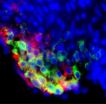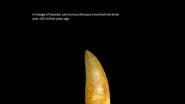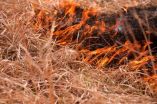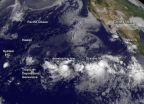(Press-News.org) It has long been known that biomass burning – burning forests to create agricultural lands, burning savannah as a ritual , slash-and-burn agriculture and wildfires – figures into both climate change and public health.
But until the release of a new study by Stanford University Civil and Environmental Engineering Professor Mark Z. Jacobson, the degree of that contribution had never been comprehensively quantified.
Jacobson's research, detailed in a paper published July 30 in the Journal of Geophysical Research: Atmospheres, is based on a three-dimensional computer model simulation of the impacts of biomass burning. His findings indicate that burning biomass is playing a much bigger role in climate change and human health issues than previously thought. (see paper: http://web.stanford.edu/group/efmh/jacobson/Articles/VIII/bioburn/14BburnJGR.pdf)
"We calculate that 5 to 10 percent of worldwide air pollution mortalities are due to biomass burning," Jacobson said. "That means that it causes the premature deaths of about 250,000 people each year."
Carbon, of course, is associated with global warming. Most carbon emissions linked to human activity are in the form of carbon dioxide gas (CO2), but other forms of carbon include the methane gas (CH4) and the particles generated by such fires – the tiny bits of soot, called black carbon, and motes of associated substances known as brown carbon.
Jacobson explains that total anthropogenic, or human-created, carbon dioxide emissions, excluding biomass burning, now stand at more than 39 billion tons annually. That incorporates everything associated with non-biomass-burning human activity, from coal-fired power plants to automobile emissions, from concrete factories to cattle feedlots.
Jacobson, the director of Stanford's Atmosphere/Energy Program and a senior fellow at the Woods Institute for the Environment and the Precourt Institute for Energy, said almost 8.5 billion tons of atmospheric carbon dioxide – or about 18 percent of all anthropogenic carbon dioxide emissions –comes from biomass burning.
But Jacobson's research also demonstrates that it isn't just the CO2 from biomass burning that's the problem. Black carbon and brown carbon maximize the thermal impacts of such fires. They essentially allow biomass burning to cause much more global warming per unit weight than other human-associated carbon sources.
Black and brown carbon particles increase atmospheric warming in three ways. First, they enter the minuscule water droplets that form clouds. At night, that's not an issue. But during the day, sunlight scatters around within clouds, bathing them in luminescence.
When sunlight penetrates a water droplet containing black or brown carbon particles, Jacobson said, the carbon absorbs the light energy, creating heat and accelerating evaporation of the droplet. Carbon particles floating around in the spaces between the droplets also absorb scattered sunlight, converting it to heat.
"Heating the cloud reduces the relative humidity in the cloud," Jacobson said.
This causes the cloud to dissipate. And because clouds reflect sunlight, cloud dissipation causes more sunlight to transfer to the ground and seas, ultimately resulting in warmer ground and air temperatures.
Finally, Jacobson said, carbon particles released from burning biomass settle on snow and ice, contributing to further warming.
"Ice and snow are white, and reflect sunlight very effectively," Jacobson said. "But because carbon is dark it absorbs sunlight, causing snow and ice to melt at accelerated rates. That exposes dark soil and dark seas. And again, because those surfaces are dark, they absorb even more thermal energy from the sunlight, establishing an ongoing amplification process."
Jacobson noted that some carbon particles – specifically white and gray carbon, the variants associated with some types of ash – can exert a cooling effect because they reflect sunlight. That must be weighed against the warming qualities of the black and brown carbon particles and CO2 emissions generated by biomass combustion to derive a net effect.
Jacobson said the sum of warming caused by all anthropogenic greenhouse gases – CO2, methane, nitrous oxide, chlorofluorocarbons and some others – plus the warming caused by black and brown carbon will yield a planetary warming effect of 2 degrees Celsius over the 20-year period simulated by the computer. But light-colored particles – white and gray particles primarily – reflect sunlight and enhance cloudiness, causing more light to reflect.
"The cooling effect of these light-colored particles amounts to slightly more than 1 C," Jacobson said, "so you end up with a total net warming gain of 0.9 C or so. Of that net gain, we've calculated that biomass burning accounts for about 0.4 C."
Jacobson's model also tracks the impact of the direct heat produced by combusting biomass.
"The direct heat generated by burning biomass is significant and contributes to cloud evaporation by decreasing relative humidity," Jacobson said. "We've determined that 7 percent of the total net warming caused by biomass burning – that is, 7 percent of the 0.4 C net warming gain – can be attributed to the direct heat caused by the fires."
Biomass burning also includes the combustion of agricultural and lumber waste for energy production. Such power generation often is promoted as a "sustainable" alternative to burning fossil fuels. And that's partly true as far as it goes. It is sustainable, in the sense that the fuel can be grown, processed and converted to energy on a cyclic basis. But the thermal and pollution effects of its combustion – in any form – can't be discounted, Jacobson said.
"The bottom line is that biomass burning is neither clean nor climate-neutral," he said. "If you're serious about addressing global warming, you have to deal with biomass burning as well."
Exposure to biomass burning particles is strongly associated with cardiovascular disease, respiratory illness, lung cancer, asthma and low birth weights. As the rate of biomass burning increases, so do the impacts to human health.
INFORMATION:
(Glen Martin is a former San Francisco Chronicle reporter based in Santa Rosa, Calif. His latest book, "Game Changer: Animal Rights and the Fate of Africa's Wildlife," was published by the University of California Press in 2012.)
Stanford professor finds that wildfires and other burns play bigger role in climate change
New study quantifies the degree of contribution to global climate caused by slash-and-burn agriculture and wildfires, and finds bigger than expected impact
2014-07-31
ELSE PRESS RELEASES FROM THIS DATE:
Childhood coxsackie virus infection depletes cardiac stem cells and might compromise heart health in adults
2014-07-31
There is epidemiological evidence that links type B coxsackie virus (CVB) infection with heart disease, and research published on July 31st in PLOS Pathogens now suggests a mechanism by which early infection impairs the heart's ability to tolerate stress at later stages of life.
CVB infection is very common and affects mostly children. The symptoms range widely: over half of the infections are thought to be asymptomatic, the majority of children who get sick have only a mild fever, and a very small proportion get inflammation of the heart or brain. On the other hand, ...
Multidisciplinary study reveals big story of cultural migration
2014-07-31
Quantifying and transforming the history of culture into visual representation isn't easy. There are thousands of individual stories across millennia to consider, and some historical conditions are nearly impossible to measure.
Addressing this challenge, Dr. Maximilian Schich, associate professor of arts and technology at The University of Texas at Dallas, has brought together a team of network and complexity scientists to create and quantify a big picture of European and North American cultural history.
Schich, an art historian who works under the umbrella of the ...
Shrinking dinosaurs evolved into flying birds
2014-07-31
VIDEO:
This movie is an animated version of how birds arose from a very special lineage of evolving dinosaurs.
Click here for more information.
A new study involving scientists from the University of Southampton has revealed how massive, meat-eating, ground-dwelling dinosaurs evolved into agile flying birds: they just kept shrinking and shrinking, for over 50 million years.
Today, in the journal Science, the researchers present a detailed family tree of dinosaurs and their ...
Innovative 'genotype first' approach uncovers protective factor for heart disease
2014-07-31
Cambridge, MA. Thurs. July 31, 2014 — Extensive sequencing of DNA from thousands of individuals in Finland has unearthed scores of mutations that destroy gene function and are found at unusually high frequencies. Among these are two mutations in a gene called LPA that may reduce a person's risk of heart disease. These findings are an exciting proof-of-concept for a new "genotype first" approach to identifying rare genetic variants associated with, or protecting from, disease followed by extensive medical review of carriers. The new study by researchers from the Broad Institute, ...
A mathematical theory proposed by Alan Turing in 1952 can explain the formation of fingers
2014-07-31
Alan Turing, the British mathematician (1912-1954), is famous for a number of breakthroughs, which altered the course of the 20th century. In 1936 he published a paper, which laid the foundation of computer science, providing the first formal concept of a computer algorithm. He next played a pivotal role in the Second World War, designing the machines which cracked the German military codes, enabling the Allies to defeat the Nazis in several crucial battles. And in the late 1940's he turned his attention to artificial intelligence and proposed a challenge, now called the ...
Nanostructured metal-oxide catalyst efficiently converts CO2 to methanol
2014-07-31
UPTON, NY-Scientists at the U.S. Department of Energy's (DOE) Brookhaven National Laboratory have discovered a new catalytic system for converting carbon dioxide (CO2) to methanol-a key commodity used to create a wide range of industrial chemicals and fuels. With significantly higher activity than other catalysts now in use, the new system could make it easier to get normally unreactive CO2 to participate in these reactions.
"Developing an effective catalyst for synthesizing methanol from CO2 could greatly expand the use of this abundant gas as an economical feedstock," ...
Refocusing research into high-temperature superconductors
2014-07-31
Below a specific transition temperature superconductors transmit electrical current nearly loss-free. For the best of the so-called high-temperature superconductors, this temperature lies around -180 °C – a temperature that can be achieved by cooling with liquid nitrogen.
The location of atomic nuclei and binding electrons in a material is determined by its crystal structure. However, electrons additionally have an electromagnetic angular momentum, referred to as spin. When many spins become coupled in a material, electromagnetic disturbances with a preferential orientation ...
Study finds benefits to burning Flint Hills prairie in fall and winter
2014-07-31
MANHATTAN — Kansas State University researchers have completed a 20-year study that looks at the consequences of burning Flint Hills prairie at different times of the year. It finds that burning outside of the current late spring time frame has no measurable negative consequences for the prairie and, in fact, may have multiple benefits.
The study was conducted by Gene Towne, research associate and the Konza Prairie Biological Station fire chief, and Joseph Craine, research assistant professor, both in the Division of Biology. They recently published the study, "Ecological ...
Fermi satellite detects gamma-rays from exploding novae
2014-07-31
TEMPE, Ariz. - The Universe is home to a variety of exotic objects and beautiful phenomena, some of which can generate almost inconceivable amounts of energy. ASU Regents' Professor Sumner Starrfield is part of a team that used the Large Area Telescope (LAT) onboard NASA's Fermi Gamma-ray Space Telescope satellite to discover very high energy gamma rays (the most energetic form of light) being emitted by an exploding star. The surprising discovery dispels the long-held idea that classical nova explosions are not powerful enough to produce such high-energy radiation.
In ...
NASA sees Genevieve squeezed between 3 tropical systems
2014-07-31
The resurrected Tropical Depression Genevieve appears squeezed between three other developing areas of low pressure. Satellite data from NOAA and NASA continue to show a lot of tropical activity in the Eastern and Central Pacific Oceans on July 31.
NASA/NOAA's GOES Project at the NASA Goddard Space Flight Center in Greenbelt, Maryland has been kept busy, providing visible and infrared satellite imagery of the Eastern and Central Pacific Oceans. The project uses data from NOAA's GOES-West and GOES-East satellites to create images and animations. All four systems were captured ...
LAST 30 PRESS RELEASES:
Making lighter work of calculating fluid and heat flow
Normalizing blood sugar can halve heart attack risk
Lowering blood sugar cuts heart attack risk in people with prediabetes
Study links genetic variants to risk of blinding eye disease in premature infants
Non-opioid ‘pain sponge’ therapy halts cartilage degeneration and relieves chronic pain
AI can pick up cultural values by mimicking how kids learn
China’s ecological redlines offer fast track to 30 x 30 global conservation goal
Invisible indoor threats: emerging household contaminants and their growing risks to human health
Adding antibody treatment to chemo boosts outcomes for children with rare cancer
Germline pathogenic variants among women without a history of breast cancer
Tanning beds triple melanoma risk, potentially causing broad DNA damage
Unique bond identified as key to viral infection speed
Indoor tanning makes youthful skin much older on a genetic level
Mouse model sheds new light on the causes and potential solutions to human GI problems linked to muscular dystrophy
The Journal of Nuclear Medicine ahead-of-print tip sheet: December 12, 2025
Smarter tools for peering into the microscopic world
Applications open for funding to conduct research in the Kinsey Institute archives
Global measure underestimates the severity of food insecurity
Child survivors of critical illness are missing out on timely follow up care
Risk-based vs annual breast cancer screening / the WISDOM randomized clinical trial
University of Toronto launches Electric Vehicle Innovation Ontario to accelerate advanced EV technologies and build Canada’s innovation advantage
Early relapse predicts poor outcomes in aggressive blood cancer
American College of Lifestyle Medicine applauds two CMS models aligned with lifestyle medicine practice and reimbursement
Clinical trial finds cannabis use not a barrier to quitting nicotine vaping
Supplemental nutrition assistance program policies and food insecurity
Switching immune cells to “night mode” could limit damage after a heart attack, study suggests
URI-based Global RIghts Project report spotlights continued troubling trends in worldwide inhumane treatment
Neutrophils are less aggressive at night, explaining why nighttime heart attacks cause less damage than daytime events
Menopausal hormone therapy may not pose breast cancer risk for women with BRCA mutations
Mobile health tool may improve quality of life for adolescent and young adult breast cancer survivors
[Press-News.org] Stanford professor finds that wildfires and other burns play bigger role in climate changeNew study quantifies the degree of contribution to global climate caused by slash-and-burn agriculture and wildfires, and finds bigger than expected impact








